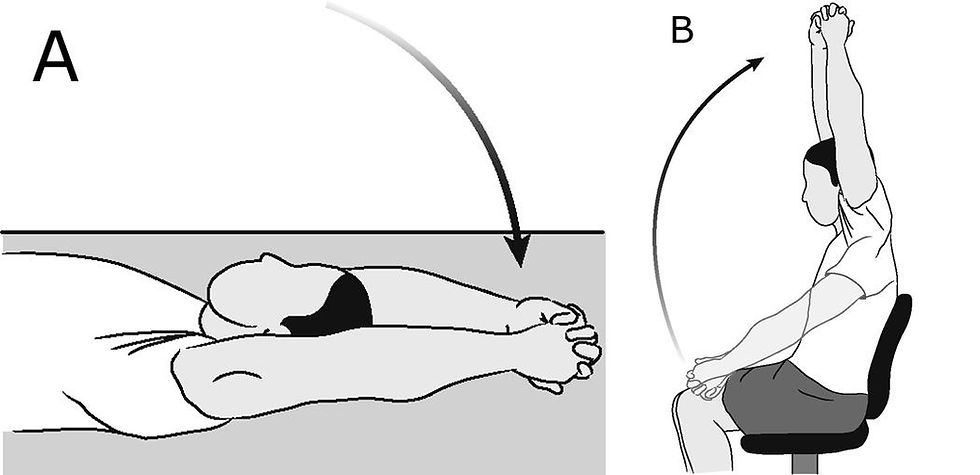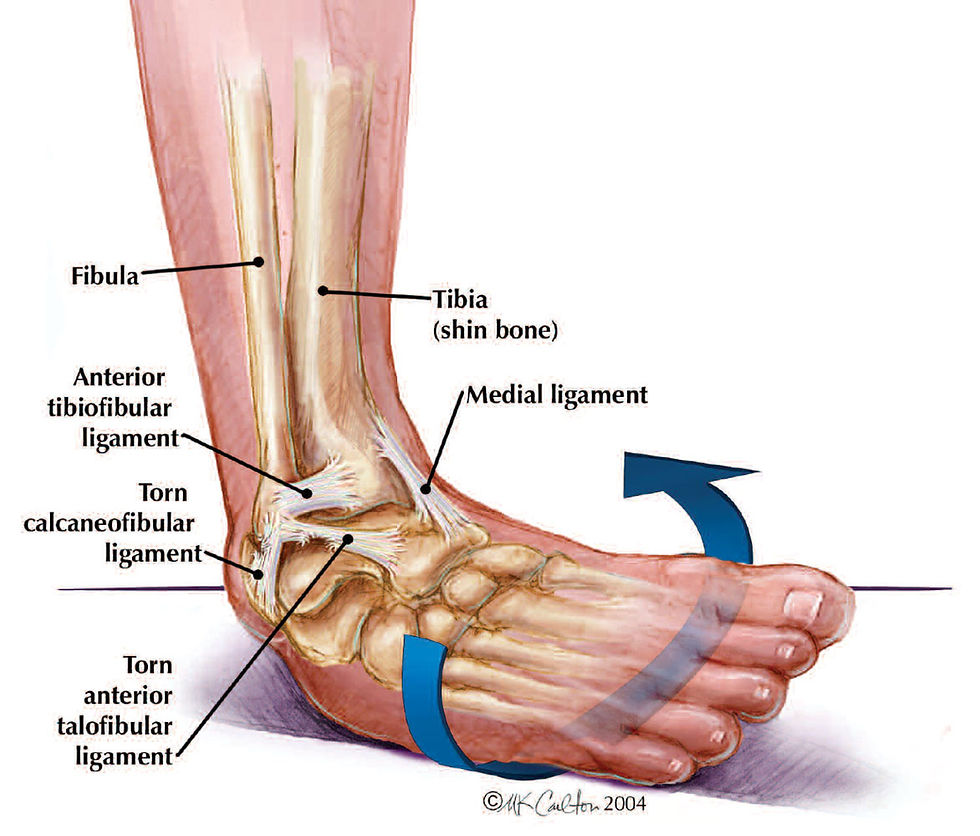Rehabbing a Rotator Cuff Strain: 6 Effective Tips on How to Bounce Back Stronger!
- Dr. Martin Gonzalez

- Jul 27, 2023
- 4 min read
Updated: Jan 26
Understanding Shoulder Pain
Are you experiencing ongoing shoulder pain that won't go away no matter what?
Alongside lower back pain, a significant number of my patients deal with shoulder injuries. A lot of them react the same way...
They panic. They think: "Let me stop moving," "I have to rest it completely," "using my arm in any shape, way, or form will cause more damage."
While I don't blame my patients for having these beliefs, they are grossly misguided.
It's true that many individuals suffer from rotator cuff strains, especially those engaged in activities requiring repetitive overhead movements or those who push their limits during exercise.
Perhaps you lifted that ladder wrong while doing some housework, or you felt a twinge during shoulder raises at the gym and awoke with a dull pain the following day.
However, the last thing you want to do is rest your shoulder completely. Nine out of ten times, the process is relatively straightforward once you rule out any red flags, cervical-related pain, or nerve symptoms.
All it takes is a little patience, some optimism, and a graded return to activity.
This blog post explores the foundational steps in rehabbing a rotator cuff strain. Continue reading to learn some practical and informative tips to help you recover correctly and get back to what you love doing.
Understanding the Rotator Cuff
Before diving into the rehab process, let's quickly understand the rotator cuff. The rotator cuff is a group of muscles and tendons surrounding the shoulder joint.
These muscles allow for a wide range of motion in your shoulder while providing stability and strength. The four muscles that comprise the rotator cuff are the supraspinatus, infraspinatus, subscapularis, and teres minor.
These muscles work together to create your shoulder complex and are activated with everyday tasks' lifting, carrying, throwing, and daily tasks.
Six Effective Tips
1. P.E.A.C.E and L.O.V.E. Method:
If you've read my other blog posts, you know I'm a big fan of this method. It's an excellent starting point for managing your rotator cuff strain or any further musculoskeletal injury.
Please read my article on ankle sprains for those unfamiliar or for a more detailed dive into this method.
Remember, giving your shoulder proper rest, gradually loading it, and NOT being overprotective or overly careful is essential for effective rehabilitation.
2. Gentle Range-of-Motion Exercises:
Motion is lotion.
So, it's been a few days since you strain your shoulder while lifting. You think you should completely lay off your arm and give it rest for a week or two.
Not necessarily.
Not only will this slow down the healing process, but it may even lead to decreased mobility. The first step is to regain your mobility and range of motion (ROM), help maintain flexibility, and prevent stiffness in your shoulder joint.
Start with simple movements like pendulum swings, shoulder shrugs, and active assisted ROM exercises, using a cane or unaffected arm to bring your arm up and above your head.
Gradually increase the repetitions and range of these exercises as your shoulder improves.
Perform these daily, and remember a mild increase in discomfort and pain is entirely okay.

3. Strengthening Exercises:
Strengthening the muscles around your rotator cuff is crucial for a full recovery. Begin with isometrics, then work up to concentric resistance band exercises, such as external-internal rotation, shoulder flexion, and shoulder abduction.
Gradually progress to dumbbell exercises like lateral raises and front raises. Remember to use light weights and focus on proper form to avoid further strain. Initially, aim for two sets of 8-12 reps. Remember to stay in a pain-tolerable range. Here are some examples.
A typical routine I give patients that target the entire rotator cuff include the following:
Bent over rows
Front deltoid raises
Lateral deltoid raises
Overhead press
Upright rows
Shoulder shrugs / Farmer carry
Side-lying external rotation
4. Gradual Return to Activities:
As you regain strength and flexibility, gradually reintroduce activities that involve your shoulder. Take it slow in sports, weightlifting, or any other physical activity.
Start with low-impact exercises and progressively increase the intensity and duration. Adding in weight-bearing positions is a great idea here.
Think bird dogs, wall pushups, or even some mountain climbers. Listen to your body; if you experience excessive pain or discomfort, dial it back and give yourself more time to heal.
Remember, pain does NOT equal damage!
I recommend that most patients stay within a general pain scale of 4/10 or below. It's okay to feel some discomfort during the exercises as long as your symptoms return to baseline within a few minutes or a couple of hours.
5. Patience and Consistency:
Rehabbing a rotator cuff strain requires patience and consistency. Rome wasn't built in a day, and your shoulder won't heal overnight. Stick to your rehab routine, follow the guidance of your healthcare professional, and trust the process.
Minor improvements over time will eventually lead to a complete recovery.
Depending on the severity of the strain - your rehab process could last anywhere from two weeks to even 3-4 months.
6. Seek Professional Help:
If you're unsure about the severity of your rotator cuff strain, it's always a good idea to consult a healthcare professional. They can perform a thorough examination, diagnose accurately, and recommend a tailored rehab plan. Physical therapists and sports medicine doctors are well-equipped to guide you through recovery.
Conclusion
Rehabbing a rotator cuff strain may seem challenging, but you'll be back in action with the right approach and dedication before you know it.
Remember to keep. it. simple.
Prioritize good sleep and nutrition.
Remain patient and optimistic.
Stay active and incorporate some gentle exercises
Gradually strengthen (2-5% increase in resistance per week)
Progressively overload your shoulder
Before you realize it, you'll be lifting, throwing, and reaching with confidence once again.


Comments